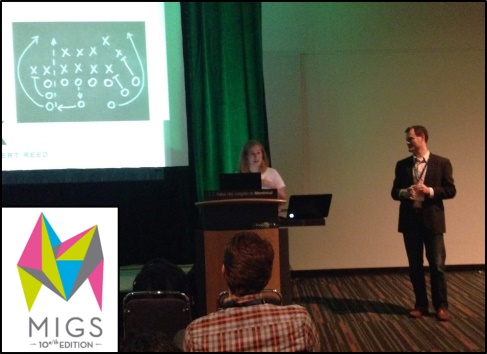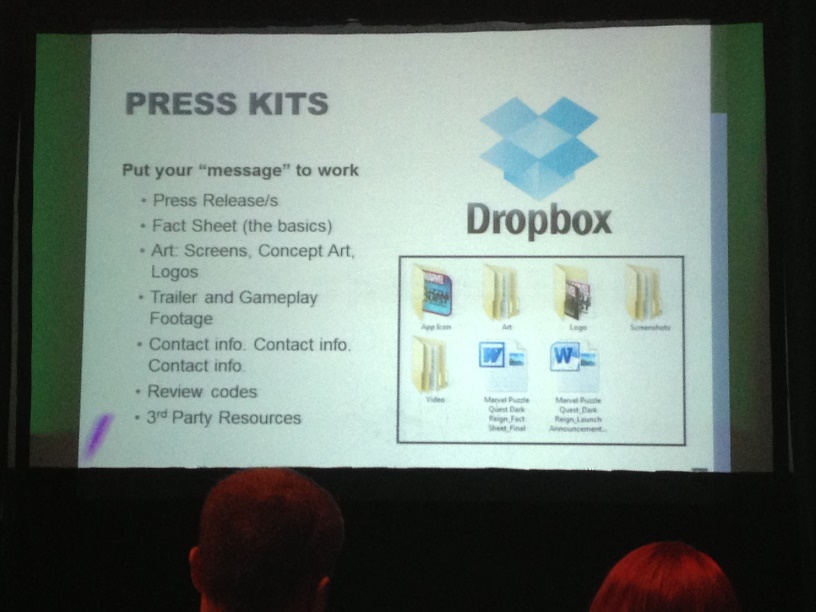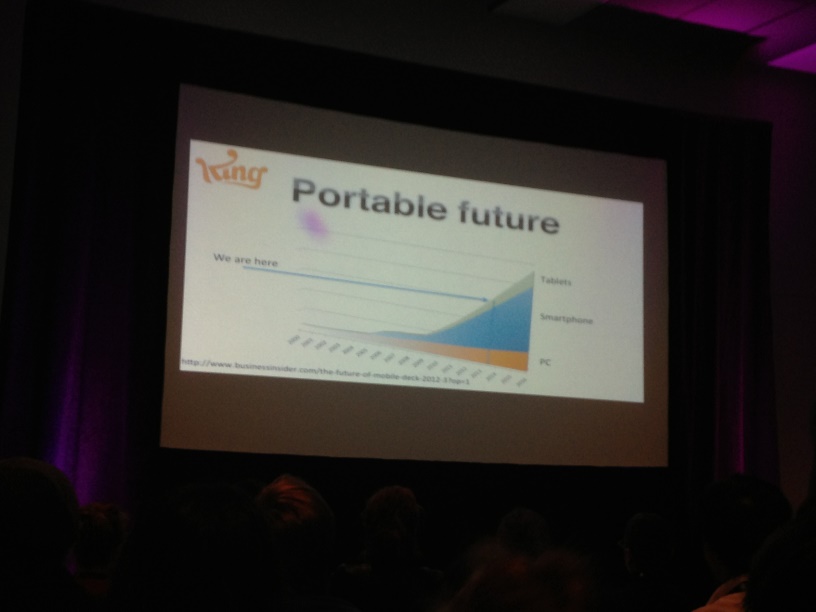A few weeks ago, I went up to the Montreal International Game Summit to see what kind of secret Canadian game development know-how could be learned.
Spoiler: A lot!

Here are my notes and pics from a few standout sessions:
Character Flaws and Choices: How to Engage Players Emotionally Without Alarming Your Producer
Alex Epstein, Compulsion Games
– Games are the only medium that offer story choices
– The player emotionally owns the choices they make
Contrast: In games, the player chooses what happens and when. In traditional storytelling, the storyteller chooses what happens and when.
To communicate exposition, have character argue with each other instead of agree – more compelling to watch/engage with
Foreshadowing: Let the player do the foreshadowing for themselves through gameplay actions, not scripted sequences
Importance of setting up the ending: “The ending should be in the story’s bones”
Flaws: “Flaws are what make us care about characters”
However, NPCs often lack flaws and act like robots
“The intimate opponent” – setting up an NPC ally as someone close to you but an antagonist, traitor, or inconvenient love interest
Ways to use flaws to make for more interesting gameplay:
1. Make a character flaw a core gameplay mechanic. Ex: In Ico, the princess Yorda needs to be led by her hand through the environment by the player.
2. Reveal an NPC flaw to send the player on an unexpected adventure.
3. Use an NPC flaw to increase the gameplay challenge.
4. Balance NPC flaws with virtues.
5. Let the player choose from NPCs with flaws that best complement their play style (instead of making it more difficult or annoying)
Also: Consider using character flaws to close plotholes
Why Does Free Work?
Nicholas Lovell, Games Brief
Show of hands: Who in the audience has games they’ve bought on Steam but never played? Says it’s not that different from the underlying concept behind f2p – you want to express yourself through what you spend money on, at the core.
Free ebook – 10 Ways to Make Money in a FREE World
Says the $0.99 price point is the worst: it communicates that “the game isn’t good enough to be expensive or good enough to be free.”
The f2p first time user experience (FTUE) has 30 seconds to convince players to play. “Show them where fun lives.”
The handicap principle – intentionally doing unproductive things with your time and resources as if to say, “I’m so good, look at all the surplus time and effort I can afford to squander.”
Of high-spending supporters: “They spend to make other people feel happy”
Albert Reed, Demiurge Studios
Elicia Basoli, Elicia Basoli Communications
Elicia:
When coming up with positioning for your game, brainstorm a list of adjectives that describe the game and the studio
Basic questions to ask yourself:
1. What is the game?
2. What makes it/you unique?
3. Why is it fun/entertaining?
4. Why should someone care?
Embargoes: Can be a great tool, the press appreciates embargoes on assets and news stories since it gives them more time to prepare and write stores.
-> However, only send embargos to select press you know, not 200 random ones – they might break the embargo and piss other press off
For bigger shows and conventions, send press invites early – bigger studios tend to book press quickly at events
Albert:
– Demiurge experimented with augmenting their userbase with paid acquisition. Their takeaway was that paid acquisition campaigns is not something to dabble in since you need lots of expertise to do it correctly. They ended up going with a firm to help with this.
Romance Games: Unpopular Genre or Untapped Market?
Heidi McDonald, Schell Games

McDonald posits that as the average age of romance novels decreases and the average gamer age rises, there could be a sweet spot of gamers eager for meaningful romance games.
Creating Candy Crush – King´s Recipe for Sweet Success
Tommy Palm, King.com

OK, the real secret sauce. Note how they always have an opportunity for the player to engage with the game on a new platform.
And to cap it off, here’s a slide from Ubisoft Creative Director Jason Vanderberg’s closing talk:
– Whenever you have an idea and someone tries to shoot it down, reply with this:

You know, we have a game you might be interested in…
– Followed by “Can you imagine any version of this idea that wouldn’t suck?”
If they think for a second and say yes, reply with “Then that’s what I mean!”














